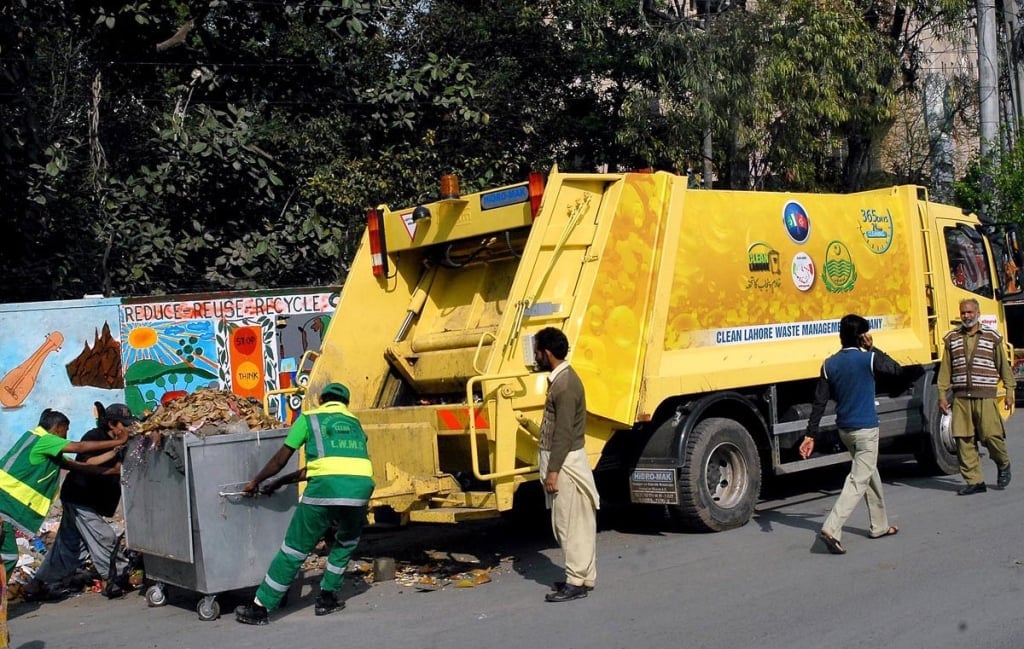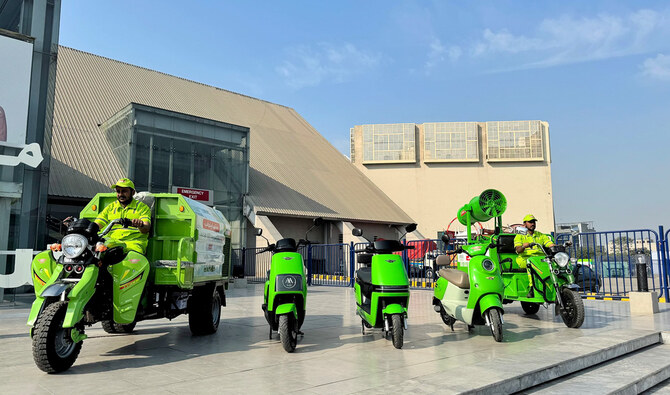CM aims to clean up Punjab in three months through Suthra Punjab program.
Suthra Punjab program
Maryam Nawaz’s Punjab is Clean Punjab. Chief Minister Maryam Nawaz launched Pakistan’s largest “Suthra Punjab Program.” The ceremony was attended by the Punjab Assembly Speaker, provincial Ministers, and Assembly Members. Zeeshan Rafique, Provincial Minister for Local Government, briefed the Chief Minister on the Suthra Punjab Program.
The Chief Minister set a three-month objective for cleaning up Punjab. Inspection of modern loaders, trucks, sprayers, machines, road washers, e-bikes, and other machinery. The Chief Minister spoke with the workforce and praised the sanitation workers. The Suthra Punjab Program will also generate employment opportunities. Billions of rupees have been allocated for cleanliness.
Punjab has implemented a standard cleaning method to ensure cleanliness in every street and area. The authorities have introduced a comprehensive cleaning system and added new equipment to enhance operations.

Overviews of the Suthra Punjab Program
Punjab Chief Minister Maryam Nawaz has set an ambitious goal of cleaning up the province within three months under the newly launched “Suthra Punjab Program.” The program is Pakistan’s largest clean-up initiative.
The program’s goal is to implement a standard cleaning system throughout Punjab and provide a sustainable approach to urban and rural areas. During the much-anticipated inaugural ceremony, the Chief Minister emphasized her commitment to making Punjab a model of cleanliness.
Suthra Punjab Program’s Launch Ceremony
Chief Minister Maryam Nawaz launched the Suthra Punjab Program in front of dignitaries such as the Speaker of the Punjab Assembly, provincial ministers, and assembly members. The event highlighted the government’s commitment to addressing trash management and urban cleanliness concerns.
Zeeshan Rafique, Provincial Minister for Local Government, offered a detailed overview of the program’s organization, aims, and implementation strategy. The launch demonstrated the Punjab government’s commitment to tackling long-standing sanitation issues while generating new development prospects. The Chief Minister’s speech stressed her vision for a clean Punjab and her commitment to making it a reality within three months.
Key Highlights of the Suthra Punjab Programme
The Suthra Punjab Program stands out for its comprehensive and integrated approach. The key aspects of the program include:
- The program utilizes contemporary techniques and machinery to enhance cleaning efficiency.
- The Chief Minister personally inspected equipment such as modern loaders, trucks, sprayers, road washers, and ebikes.
CM Maryam Nawaz interacted with sanitation workers, recognizing their accomplishments and encouraging them to continue their hard work.
This conversation demonstrates the government’s admiration for frontline workers and its commitment to improving morale.
All districts of Punjab have implemented an integrated cleaning system to unify waste management procedures and ensure consistent clean-up operations in urban and rural areas. The government has allocated a massive budget to the Suthra Punjab Program, using the funds to purchase new machinery, pay employees, and cover operational costs for system maintenance.

Employment Opportunities and Economic Impacts
The Suthra Punjab Program is expected to deliver major economic advantages alongside its environmental goals. It has created new job opportunities, particularly for laborers and skilled personnel to operate and maintain cleaning equipment.This action will not only improve cleanliness, but will also help to alleviate poverty by providing permanent jobs for thousands of people in Punjab.
The purchase of sophisticated cleaning equipment is also intended to benefit local enterprises. Loader, truck, and other equipment manufacturers will most certainly enjoy higher demand, which will help to boost the provincial economy. By spending extensively in sanitary infrastructure, the government ensures a cleaner environment while simultaneously stimulating economic growth.
CM’s Vision and Goals
Chief Minister Maryam Nawaz’s ambition for Punjab extends beyond short-term aims. The Suthra Punjab Program aims to establish a long-term paradigm for cleanliness and hygiene. During her speech, the CM underlined that it is the responsibility of every citizen and government official to keep every street and community clean.
She set a clear and demanding goal: achieve significant cleaning improvements across Punjab in three months. This timetable demonstrates the government’s urgency and commitment to resolving the sanitation situation. The CM also emphasized the need of public awareness and collaboration in sustaining the program’s impact after its first implementation phase.
Public-Government Collaboration
The success of the Suthra Punjab Program is dependent on strong participation between the government and the general populace. While the government provides resources and infrastructure, public engagement is critical to maintaining the program’s success.
The government encourages community members to take responsibility for their local ecosystems by properly disposing of rubbish and supporting cleanliness campaigns.
It will launch awareness initiatives across the province to educate people about the importance of sanitation and their role in creating a cleaner Punjab.
This collaborative approach guarantees that the program’s advantages reach every area of the province, establishing a sense of shared responsibility.
Conclusion
The Suthra Punjab Program represents a substantial improvement in Punjab’s sanitation and cleanliness.
Led by Chief Minister Maryam Nawaz, the program aims to make Punjab a model of cleanliness within three months. With billions invested, modern equipment installed, and new jobs created, it promises both environmental and economic benefits.The Suthra Punjab Program could mark a historic shift by uniting government and public efforts. The people of Punjab must now collaborate with their government to build a healthier, better future for all.







